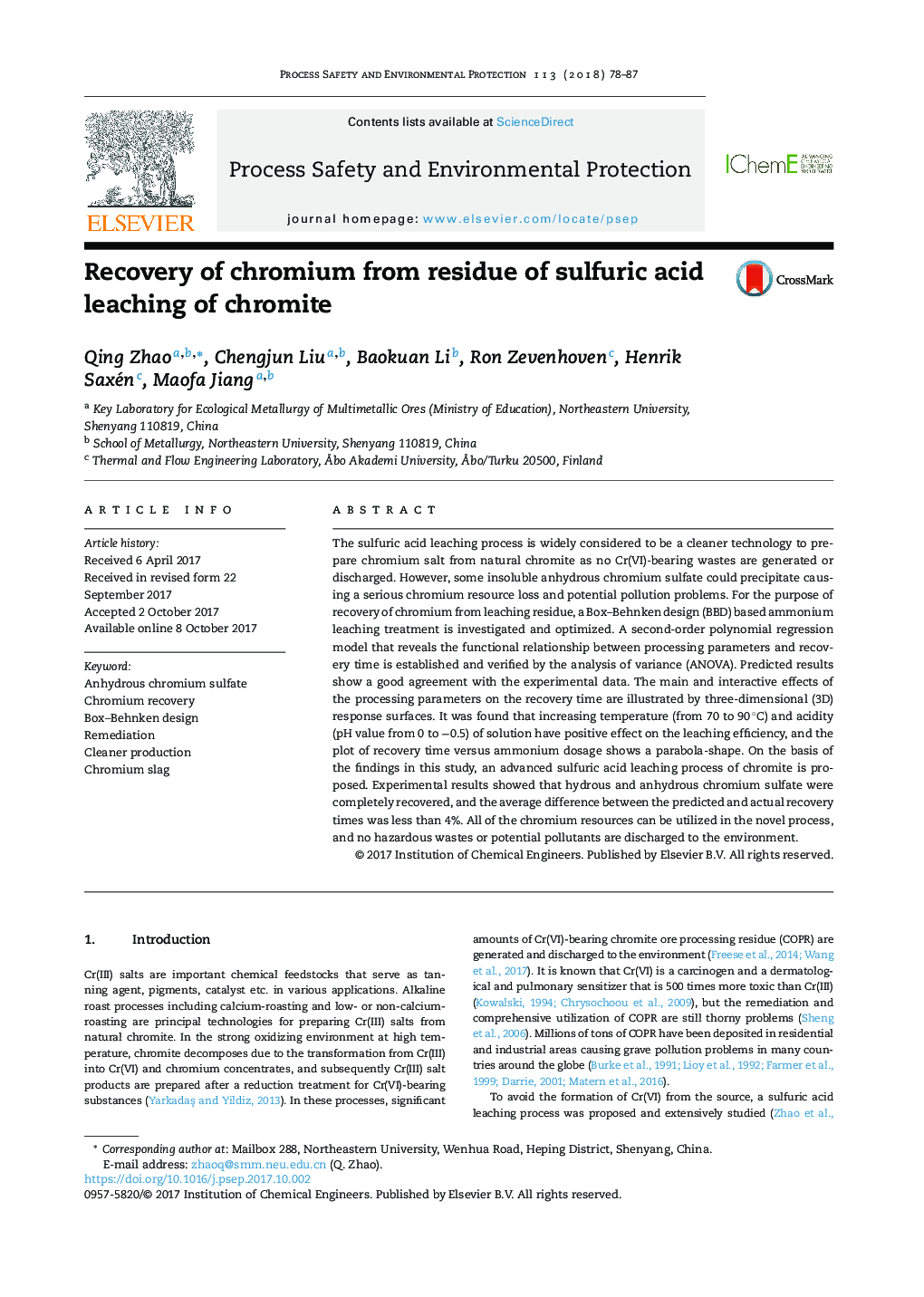| کد مقاله | کد نشریه | سال انتشار | مقاله انگلیسی | نسخه تمام متن |
|---|---|---|---|---|
| 4980624 | 1453326 | 2018 | 10 صفحه PDF | دانلود رایگان |
- An accurate prediction model for Cr2(SO4)3 recovery from residue was established.
- 3D response surfaces were plotted revealing the optimum process conditions.
- An advanced sulfuric acid leaching process of chromite was proposed.
- All residual chromium was recovered and no hazardous wastes were discharged.
The sulfuric acid leaching process is widely considered to be a cleaner technology to prepare chromium salt from natural chromite as no Cr(VI)-bearing wastes are generated or discharged. However, some insoluble anhydrous chromium sulfate could precipitate causing a serious chromium resource loss and potential pollution problems. For the purpose of recovery of chromium from leaching residue, a Box-Behnken design (BBD) based ammonium leaching treatment is investigated and optimized. A second-order polynomial regression model that reveals the functional relationship between processing parameters and recovery time is established and verified by the analysis of variance (ANOVA). Predicted results show a good agreement with the experimental data. The main and interactive effects of the processing parameters on the recovery time are illustrated by three-dimensional (3D) response surfaces. It was found that increasing temperature (from 70 to 90 °C) and acidity (pH value from 0 to â0.5) of solution have positive effect on the leaching efficiency, and the plot of recovery time versus ammonium dosage shows a parabola-shape. On the basis of the findings in this study, an advanced sulfuric acid leaching process of chromite is proposed. Experimental results showed that hydrous and anhydrous chromium sulfate were completely recovered, and the average difference between the predicted and actual recovery times was less than 4%. All of the chromium resources can be utilized in the novel process, and no hazardous wastes or potential pollutants are discharged to the environment.
277
Journal: Process Safety and Environmental Protection - Volume 113, January 2018, Pages 78-87
